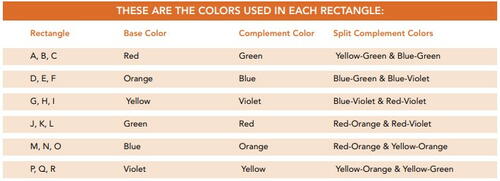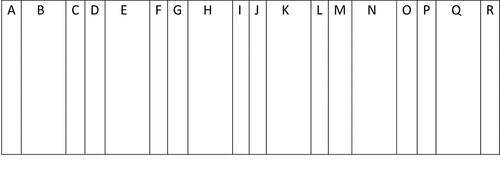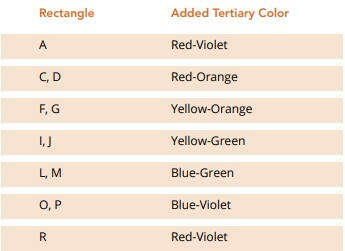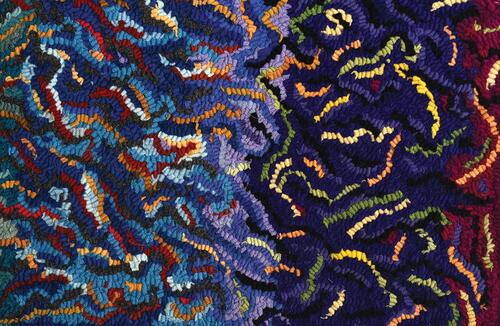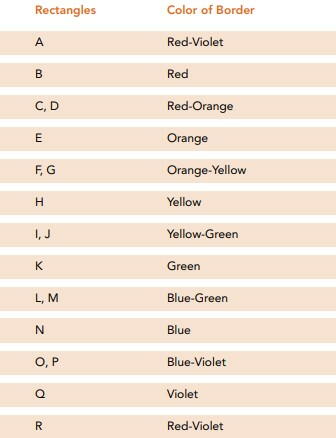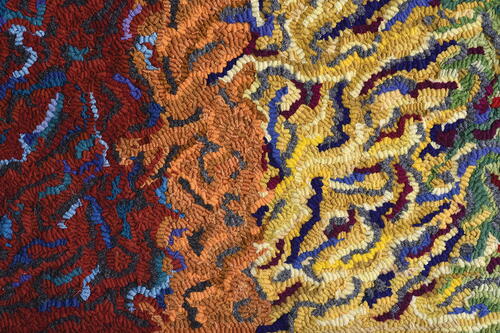Abstract Rainbow
Create an abstract hooked rug

Rug hookers enjoy using patterns to portray a large variety of flora, fauna, people, geometrics, and landscapes. The choices seem endless. But have you ever desired to hook a rug without using a detailed pattern? Would you like to quickly create your own basic pattern so you could jump to the hooking part?
Do you have a stash of wool and cut strips, of any width, that you do not know what to do with? Would you like to create a beautiful rug without having to dye wool? Do you have odds and ends of various sized backing fabrics that just sit in your closet? Would you like to create a beautiful rug that you can admire, as you play about with color theory?
Here is a thought: hook an abstract rainbow. Paul Jackson Pollock was an American abstract expressionist painter known for pouring or dribbling household paint onto canvas laid on a floor. I used his inspiration to create an abstract rug. Rather than use paint, I would use wool strips, and I could incorporate elements of color theory.
BASIC PATTERN
Hook adjacent areas, such as rectangles, each with a single color (hue). The hues can follow the color wheel (red, orange, yellow, green, blue, and violet) or be ordered in any arrangement you wish. To make it even more complex, use triangles. (Just draw a diagonal across a rectangle to create two triangles. The diagonal could be reversed in adjacent triangles. Two diagonals could be used in each rectangle, forming four triangles. The possibilities are endless.).
Here is the color theory part.
-
As you design, consider that each area of color can be a mixture of light, dark, bright, and dull values.
-
Use all solid colors, all textures, or a combination of both.
-
Hook any way you choose: curlicues, spirals, or straight lines in the same or different directions over the whole area or vary the pattern in different parts of the area.
-
Combine as many values (light/ dark), chromas (bright/ dull, intensities), shades, tints, and tones, of each color (hue) as you like.
TWO BASIC COLOR SCHEMES
-
COMPLEMENTARY:
- Choose a base color.
- The complement is the color directly across the color wheel. The complement of red is green. Red and green create a two-color, complementary color scheme. Hook two complementary colors in each area of your rug. The first rectangle could contain red and green values. An adjacent rectangle might have orange and blue values, the next adjacent area, yellow and violet, followed by green and red, then blue and orange, and the last, violet and yellow, or—rather than arranging the colors according to the color wheel—place them in any order you would like.
- Use as much of each complementary color in each area as you wish.
Rainbow, 47 1 /2" x 17 1 /2", #3- to #6-cut wool on rug warp. Designed and hooked by John Leonard, Wilmington, North Carolina, 2021. -
SPLIT COMPLEMENTARY:
- This color scheme consists of a base color and two colors next to the complement of the base color.
- Select a color to be the base color.
- On a color wheel, find the complement opposite to this base color. Use the two colors on either side of the complement and the base color to form a split complementary, three-color scheme.
- A split complementary color scheme for red would use red as the base color. Green is the complement. The two colors on either side of green are yellow-green and blue-green. This split-complementary color scheme would include the base color, red, and the two colors on either side of the complement, yellow-green and blue-green.
-
For my rug, I decided to add complementary colors to a split complementary color scheme to make a four-color combination. For example, for red, I used red (as the base color), green (as the complement), and yellow-green and blue-green (the two colors on either side of green). This is a combination of two color schemes: complementary and split complementary. I did this because I wanted to include the complements for more contrast, rather than using just base colors and split complements. Also, adding complements let me use additional wool from my stash. I have not been able to find any information about combining or not combining color schemes in one rug or other art forms. But why not? It is my rug!
-
SIMPLIFY, SIMPLIFY, SIMPLIFY
If this all seems too complicated, why not just forget those defined color schemes? Find a piece of leftover backing and some wool you like and start hooking curlicues or whatever shapes appeal to you. You can always pull out what you do not like and replace it with something else -
OTHER COLOR SCHEMES
There are several other color schemes such as double complementary, tetradic, analogous, and triadic. A little research will help you find them.
I found Joen Wolfrom’s Ultimate 3-in-1 Color Tool most valuable when trying to determine the colors of my wool, especially the tertiary colors. Also, her color plans (color schemes) for each color were most helpful
HOOKING RAINBOW
-
First, for interest, I put black curlicues in rectangles A, B, and C, and P, Q, and R; dark gray curlicues in rectangles D, E, F and M, N, and O; and light gray curlicues in G, H, I and J, K, L. I hooked these in before hooking in the following colors:
-
Diagram for Rainbow: 18 adjacent rectangles, each labeled with a letter from A to R. The height of the rectangles is 16".
Rectangles A, C, D, F, G, I, J, L, M, O, P, and R measure 1 1 /4" wide.
Rectangles B, E, H, K, N, and Q measure 5 1 /2" wide. -
Be sure that the base color is the main color in rectangles B, E, H, K, N, and Q. For example, most of the wool used in rectangle B is red. To create more interest in the rug, I added tertiary colors (red-orange, yellow-orange, yellow-green, blue-green, blue-violet, red-violet) to bridge the primary colors (red, yellow, and blue) and secondary colors (red, orange, yellow, green, blue, and violet). I added these tertiary colors to create transitional colors between the base colors. The tertiary colors bridging primary colors and secondary colors add interest to the rug. For example, red-orange in rectangles C and D shows the transition from red to orange.
-
Add interest by hooking curlicues
-
HOOKING THE BORDER
I bordered the rug with three rows of wool strips to match the adjacent colors. The left and right sides of the rug were hooked with red-violet. The top and bottom edges of the rug were bordered with the following colors: -
Although these rectangles contain other colors, the tertiary colors are the main colors. For example, most of the wool in rectangles C and D are red-orange. Also, the base colors, complement colors, and split complement colors in these rectangles blend with the tertiary colors and create additional interest. Rectangles A and R both have mostly red-violet wool. In rectangle A, the other colors are red, green, yellow-green and blue-green. In rectangle R, the other colors are violet, yellow, yellow-orange, and yellow-green. Is the rug not long enough? If you decide to extend the rug to the right, add more rectangles. Rectangle R would be followed by rectangle A, then B through R. Then get creative with it: A dear rug-hooking friend, Alex, suggested that the two ends of the rug could be joined at A and R to create a drum. She suggested hooking a color wheel for the top of the drum and a plain circle for the bottom. Creative friends are everywhere!
-
FINISHING
I finished the rug with wool strips over cording. The wool strips matched the border colors. RHM
Writer's Biography
John L. Leonard has been rug hooking since 2001. Three of his rugs have appeared in Celebration. He has contributed articles to Rug Hooking magazine and to the ATHA Newsletter. John designs rugs for Honey Bee Hive Designs, formerly, House of Price: www.rughook.com. He treasures being a member of the Cape Fear Rug Hookers



